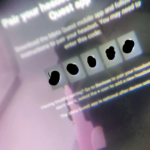Runawa, originally performed by Aurora, is a hauntingly beautiful song that captivates listeners with its ethereal melodies and emotive lyrics. Learning to play this piece on the piano can enhance your skills and allow you to express the song’s deep emotions. In this article, we will break down the steps to master “Runaway,” including the necessary chords, techniques, and tips for practice.
Step 1: Familiarize Yourself with the Song
Before diving into playing, listen to the song several times to get a feel for its structure, melody, and rhythm. Pay attention to the piano sections and how they complement the vocals. This will help you understand the piece better and give you a solid foundation to build upon.
Step 2: Learn the Chords
“Runaway” primarily revolves around a few key chords. Here’s a simplified version of the chord progression you will need:
- Verse:
- F major (F)
- C major (C)
- G minor (Gm)
- D minor (Dm)
- Chorus:
- F major (F)
- C major (C)
- G minor (Gm)
- A minor (Am)
Practice transitioning between these chords smoothly. You can use basic triads or experiment with inversions to create a richer sound.
Step 3: Break Down the Melody
The melody of “Runaway” is intricate and requires careful attention. Start by playing the right-hand melody slowly, using the following steps:
- Section by Section: Divide the song into manageable sections (verse, chorus, bridge). Focus on one section at a time.
- Use Sheet Music: If available, obtain the sheet music for “Runaway.” This will provide you with the precise notes and rhythms.
- Play Slowly: Begin by playing the melody slowly. Once you are comfortable with the notes, gradually increase your speed.
Step 4: Combine Chords and Melody
Once you feel confident playing both the chords and the melody separately, it’s time to combine them.
- Start with the Right Hand: Play the melody with your right hand while playing the corresponding chords with your left hand.
- Focus on Timing: Make sure your timing is consistent. Use a metronome if necessary to help you keep a steady tempo.
- Add Dynamics: Experiment with dynamics, playing softer during the verses and building up in the chorus to add emotional depth to your performance.
Step 5: Practice Regularly
Regular practice is crucial for mastering “Runaway.” Here are some tips:
- Set Goals: Set specific goals for each practice session, such as perfecting a section or improving your chord transitions.
- Record Yourself: Recording your practice sessions can help you identify areas that need improvement.
- Be Patient: Learning a new piece takes time. Don’t rush the process; instead, enjoy each step of your progress.










